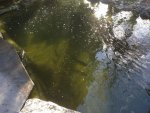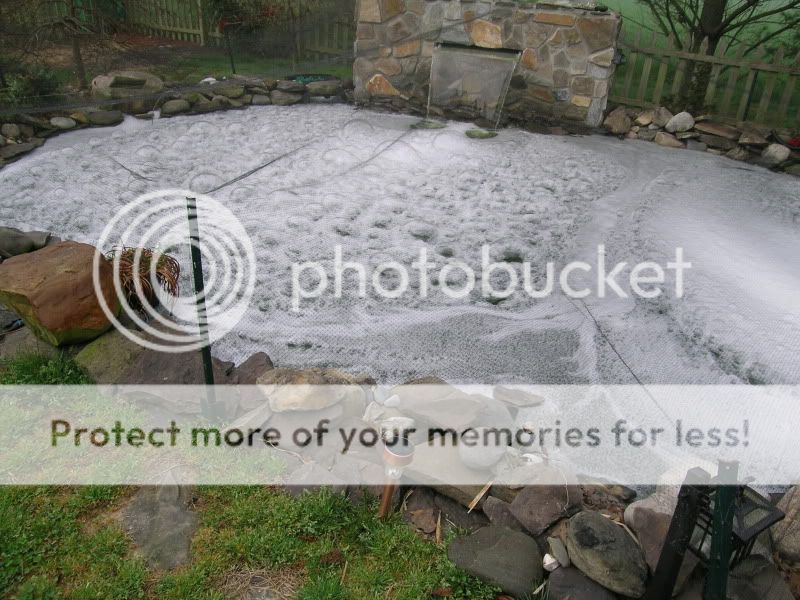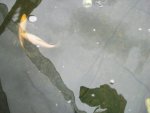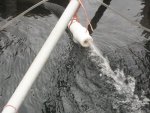Pond is 4 months old
PH - 7.5
Ammonia - 0
Phosphates - showing up as a yellow color instead of a greenish color (could be a zero - hate these test). Matching the colors is not an exact science!
Nitrites - 0

This morning I noticed a small amount of foam spreading from the waterfall, I know its from organic build up. Its just a small amount at this time (picture attached). But nonetheless its there, better to deal with this before it explodes. So the question is, how do I deal with this?
I've been netting the bottom of the pond, cleaning filters weekly, small water changes every two weeks or so. I know there are a few leaves on the bottom, I can't get every one, but I'd say its pretty good.
There are some floating nets of water hyacinths, I suppose I could take all those out and clean them up and empty out the nets, I haven't done that in a few weeks.
What am I missing? What can I do?
One more thing - ponds are real time suckers!!!!!!!!!!!!!!!!!!
PH - 7.5
Ammonia - 0
Phosphates - showing up as a yellow color instead of a greenish color (could be a zero - hate these test). Matching the colors is not an exact science!
Nitrites - 0
This morning I noticed a small amount of foam spreading from the waterfall, I know its from organic build up. Its just a small amount at this time (picture attached). But nonetheless its there, better to deal with this before it explodes. So the question is, how do I deal with this?
I've been netting the bottom of the pond, cleaning filters weekly, small water changes every two weeks or so. I know there are a few leaves on the bottom, I can't get every one, but I'd say its pretty good.
There are some floating nets of water hyacinths, I suppose I could take all those out and clean them up and empty out the nets, I haven't done that in a few weeks.
What am I missing? What can I do?
One more thing - ponds are real time suckers!!!!!!!!!!!!!!!!!!








